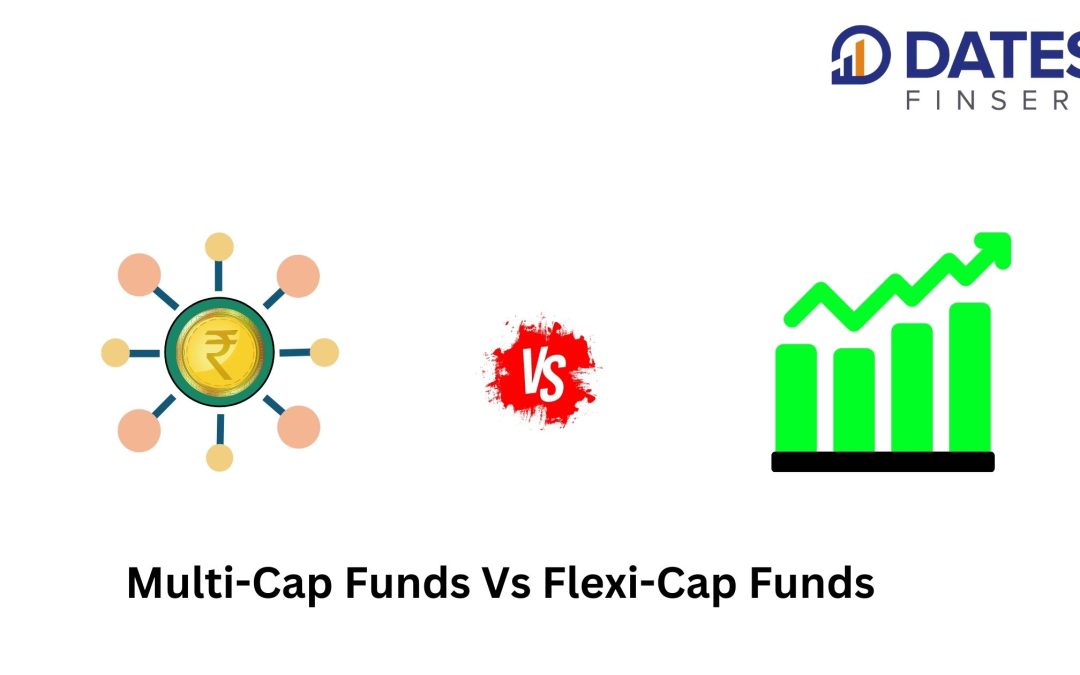Mutual Funds have gained immense popularity in India in recent years due to their potential for high returns and ability to help investors achieve long-term wealth generation objectives while protecting against inflation.
Since Mutual Funds form a crucial component of an investor’s portfolio, it is essential to understand how to invest in them effectively to make informed decisions and create a desired portfolio.
Equity mutual funds are the preferred category for long-term wealth creation and beating inflation. Within equity mutual funds, there are various sub-categories, including Multi-Cap Funds and Flexi-Cap Funds, which are often compared and contrasted.
What is Multi-Cap Fund?
Multi-Cap Funds invest in a diversified portfolio of equity and equity-related securities across various market capitalizations, as the name suggests. This means that Multi-Cap Funds can invest in large-cap, mid-cap, and small-cap companies. As every scheme invests in different percentages, Multi-Cap Funds offer a good choice to match the investor’s risk tolerance.
What is Flexi Cap Fund?
According to SEBI’s notification, a Flexi-Cap Fund is an open-ended dynamic equity scheme that invests in businesses of any market capitalization, including large, mid-size, and small-cap companies. A minimum of 65% of the scheme’s total assets must be invested in equity and equity-related instruments.
In this blog, we will discuss the definitions and distinctions between Multi-Cap Funds and Flexi-Cap Funds, which are two sub-categories of Equity Funds.
Also, read it – NPS vs SIP
Major Differences Between Multi-Cap Funds & Flexi-Cap Funds
Multi-Cap Funds:
- Meaning: The mandate of Multi-Cap Funds is to maintain a diversified portfolio of large, mid-cap, and small-cap corporations, as the name would imply.
- Equity Exposure: Multi-Cap Funds require a minimum of 75% in Equities. At least 75% of the scheme’s total assets must be invested in equity and instruments related to equity.
- Market Cap Allocation: Multi-Cap Funds are required to have a minimum 25% allocation of their portfolio in large-cap, mid-cap, and small-cap companies, as per SEBI.
- Fund Manager Discretion: The fund manager has the freedom to select stocks and market capitalization.
- Risks: Multi-Cap Funds invest in the stocks of large-cap, mid-cap, and small-cap corporations, which makes them riskier than large-cap plans that primarily invest in large corporations.
- Tax Implications: Multi-Cap Fund’s gains are subject to a 15% tax if sold within a year, while gains above Rs. 1 lakh are subject to a 10% tax if held for longer than a year.
- Who Should Invest? Multi-Cap Funds are appropriate for those willing to take on more risk in exchange for greater profits and have a longer investment horizon of at least 5-7 years due to the greater mid-cap and small-cap components.
- Benefits: Multi-Cap Funds have a unique area of expertise, provide a diversified portfolio with large-cap, mid-cap, and small-cap investments, and have lower risk compared to small-cap and mid-cap funds.
Flexi-Cap Funds:
- Meaning: Flexi-Cap Fund is an open-ended, dynamic equity program that makes investments in businesses with any market capitalization, specifically large, mid-size, and small-cap companies.
- Equity Exposure: Flexi-Cap Funds require a minimum of 65% in Equities, with at least 65% of the scheme’s total assets allocated to equity and instruments with an equity component.
- Market Cap Allocation: Flexi-Cap Funds are free to invest in any market cap because they have no mandate.
- Fund Manager Discretion: The fund manager can only select stocks with the specified market cap.
- Risks: Flexi-Cap Funds offer exposure to a wide range of equity securities, covering all industries and business entities, which could result in a portfolio with a strong mix of stocks that produces moderate returns. This fund offers a lot of flexibility in managing the risk associated with market volatility when held for a long time.
- Tax Implications: Gains from investments in this category are subject to a lower tax rate. Any profit realized within a year is considered short-term and is subject to a flat tax of 15%. Profits realized after a year are considered long-term capital gains and are fully exempt up to Rs. 1 lakh annually, after which the remaining amount is subject to a flat tax of 10% without indexation.
- Who Should Invest? Flexi-Cap Funds may interest investors looking for a large-cap-focused fund with a tactical allocation to mid-cap and small-cap stocks and who wish to invest in the sector within a 5-year time horizon.
- Benefits: Flexi-Cap Funds offer exposure to a wide range of equity securities, lower the risk of market volatility, and offer the benefit of higher returns with lower risk. It becomes simpler for the fund manager to adjust the exposure to market capitalization, and it is also easier for investors to balance their portfolios. Good stock investments are beneficial, especially for small investors.
Conclusion
In conclusion, this blog has highlighted the primary differences between Flexi-Cap and Multi-Cap Funds. We hope that the information we have provided has aided in a better understanding of these two sub-categories of Equity Funds. However, we would like to emphasize that the aim of this blog was purely educational. While both Flexi-Cap and Multi-Cap Funds offer portfolio diversification, they should only be considered if they align with your financial goals, level of risk tolerance, and investment horizon. Therefore, it is crucial to conduct thorough research and seek professional advice before making any investment decisions.

